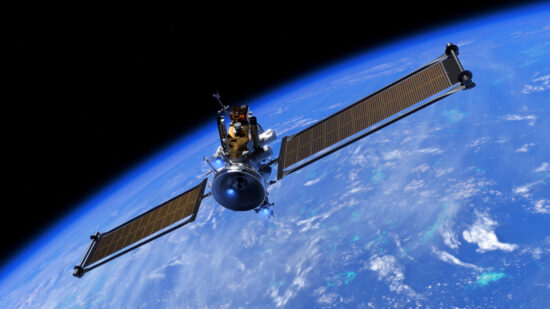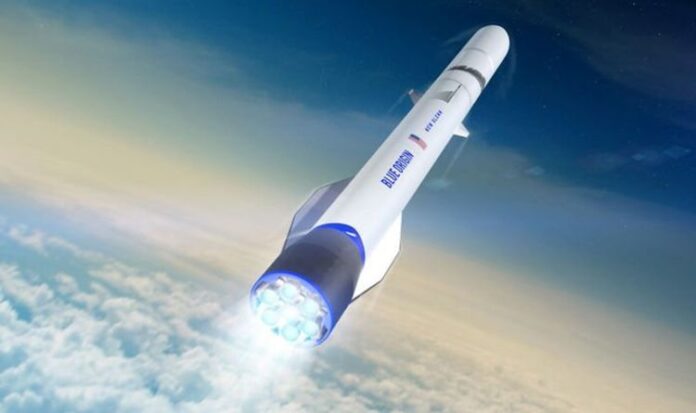Blue Origin wants to be a SpaceX competitor but so far has fallen well short. Amazon’s Jeff Bezos established the company in 2000 with plans to give Elon Musk a run for his money. The battle for commercial outer space bragging rights has been a one-billionaire show so far with Musk taking most of the kudos.
Where Blue Origin has succeeded is in suborbital flights with its New Shepard rocket with 25 out of 26 launches. It has sent 8 crews to experience short suborbital flights to space. New Shepard continues to do missions but it is New Glenn, its successor, that is designed to compete directly with SpaceX.
New Glenn is a two-stage rocket with a reusable first stage. It has a payload capacity to deliver 45,360 kilograms (100,000 pounds) to Low-Earth Orbit (LEO). It can deliver 6,800 kilograms (15,000 pounds) to the Moon.
New Glenn stands 100 metres (330 feet) tall. It is 7 metres (almost 23 feet) in width. The first stage is rated for a minimum of 25 flights. The first stage uses liquid oxygen (LOX) and methane. It is designed to land like SpaceX’s Falcon 9 using a sea-based platform.
The second stage uses LOX and liquid hydrogen. The second stage can be re-ignited in space giving it restart versatility.
The development of New Glenn has been slow but a tentative 2025 launch date is in the works for the rocket to deliver a novel Blue Origin platform called the Blue Ring to LEO.
The Purpose of the Blue Ring

Blue Ring (seen above) is a bit like an unmanned space station. It is a platform designed to deliver logistical support to satellites. It can be deployed in LEO, in cislunar space, or beyond where it can function as a host platform for:
- Payload docking and deployment,
- Transporting satellites in LEO, to medium-Earth orbit, geostationary orbit and cislunar space,
- Becoming a fuel depot for spacecraft and satellites,
- Providing data relay services,
- Removing orbital debris,
- Delivering in-space cloud computing.
Blue Ring’s current host payload capacity is 3,000 kilograms (6,400 pounds). It features 12 docking ports each capable of accommodating 500 kilogram (1,100-pound) payloads. Its 44-metre (144-foot) rollout solar array delivers 5.5 kilowatts per payload in LEO. It uses a combination of chemical and solar-electric propulsion and can maneuver in orbit at speeds, referred to as delta-V capabilities, of more than 3 kilometres (1.86 miles) per second.
Blue Ring and DarkSky-1
The U.S. Department of Defense (DoD) will be the first customer for New Glenn with the launch of Blue Ring in 2025. The mission is called DarkSky-1 (DS-1). The goal will be to demonstrate seamless ground-to-space communications, telemetry, tracking and command hardware and ground-based radiometrics. DoD is interested in Blue Ring’s capability to achieve multiple orbital locations states Paul Ebertz, Senior Vice President of Blue Origin’s In-Space Systems, making the dream real for humans to live and work in space for the benefit of the planet.
Future Plans for Blue Ring and New Glenn
Blue Origin hopes to make its second stage as reusable as the SpaceX Starship. It is working on a stainless steel replacement for the current aluminum second stage. SpaceX uses stainless steel with Starship.
Blue Origin hopes that making the second stage capable of being reused as much as its first stage will be a major step in catching up to SpaceX. A fully reusable New Glenn second stage would reduce manufacturing and per-launch costs, make it possible to do larger payload deliveries, enable refuelling from orbit and reduce orbital debris from discarded second stages.
What’s on New Glenn’s future launch list? It includes:
- Deploying Amazon’s Project Kuiper, a rival communications network of thousands of satellites to compete with SpaceX’s Starlink,
- Launching NASA’s ESCAPADE mission to Mars (originally planned for this fall but now moved to 2025 or 2026) to study the red planet’s atmosphere,
- Launching the Blue Moon lunar lander to be used in the future Artemis V mission currently scheduled for 2029.
For Blue Ring the success of the DS-1 mission would be an exciting milestone. Future Blue Rings could be deployed at specific points in space to be refuelling and waystations for missions to and from Mars. They could serve as telecommunications links for future crewed activities in space, cities in space, and for Earth-to-Mars two-way communication.
New Glenn’s versatility and reusability will add significant launch capacity for developing commercial space in LEO and cislunar space. Meanwhile, Blue Ring will play a significant role in creating a space and interplanetary presence for humanity in the 21st century.









